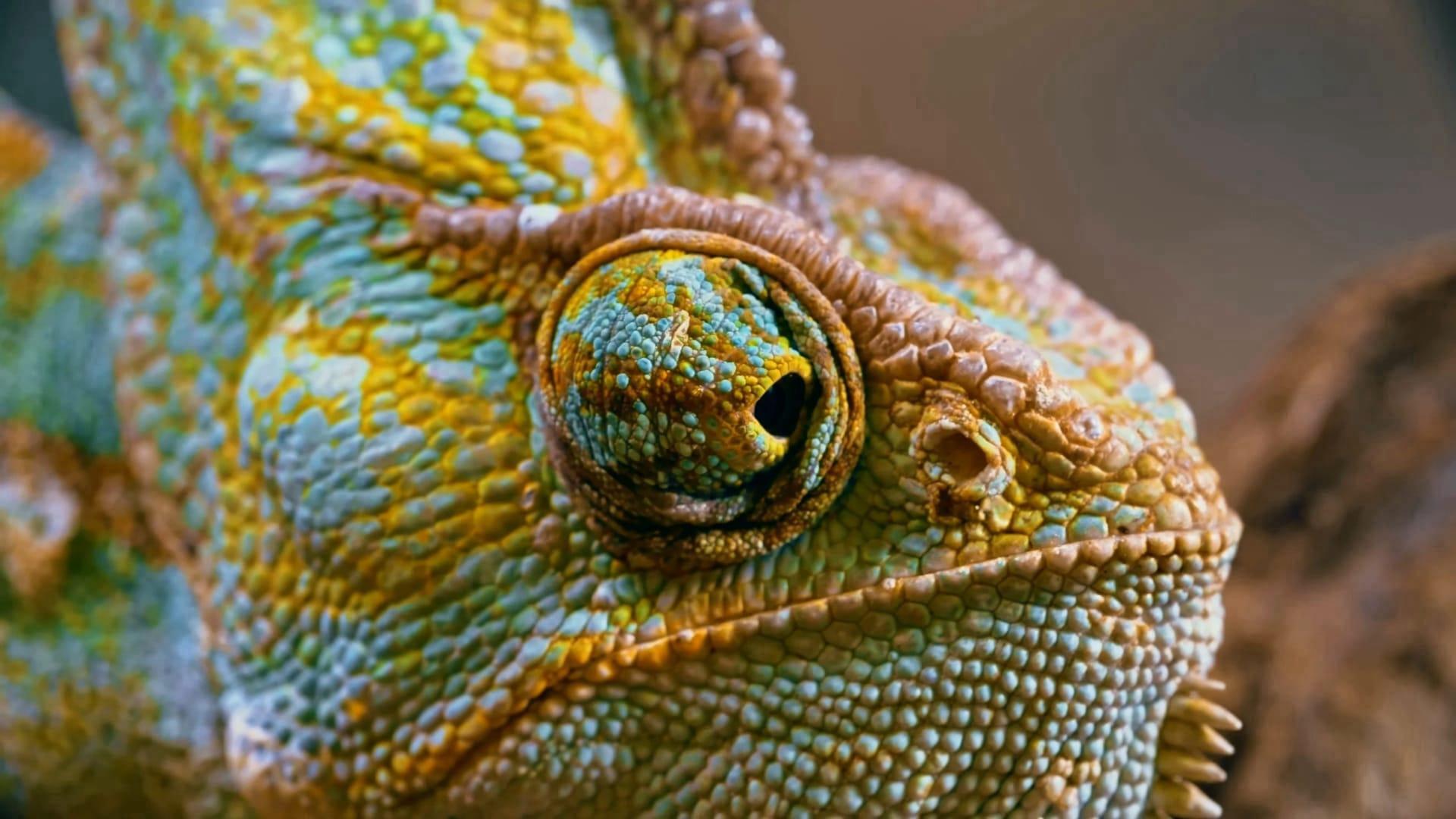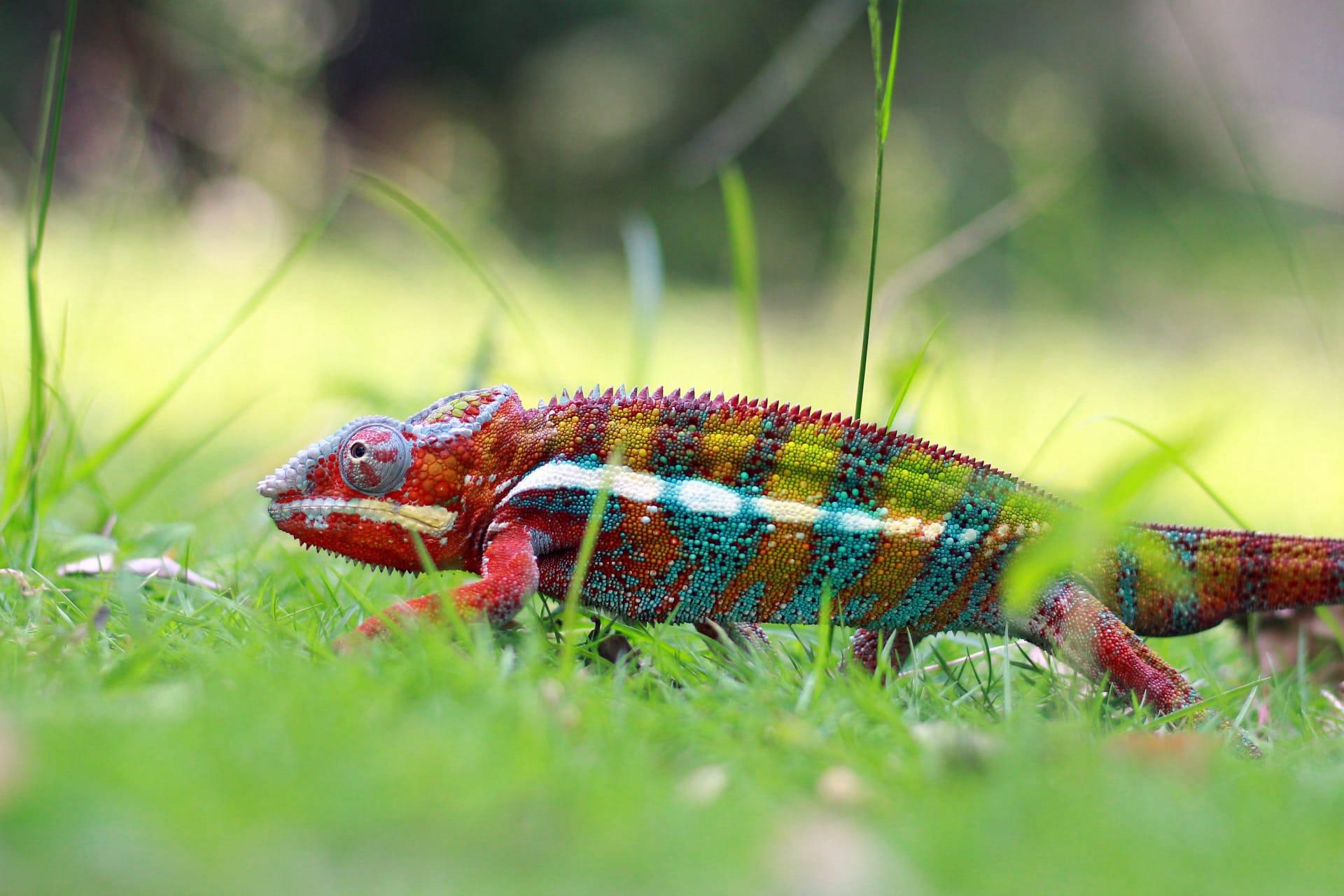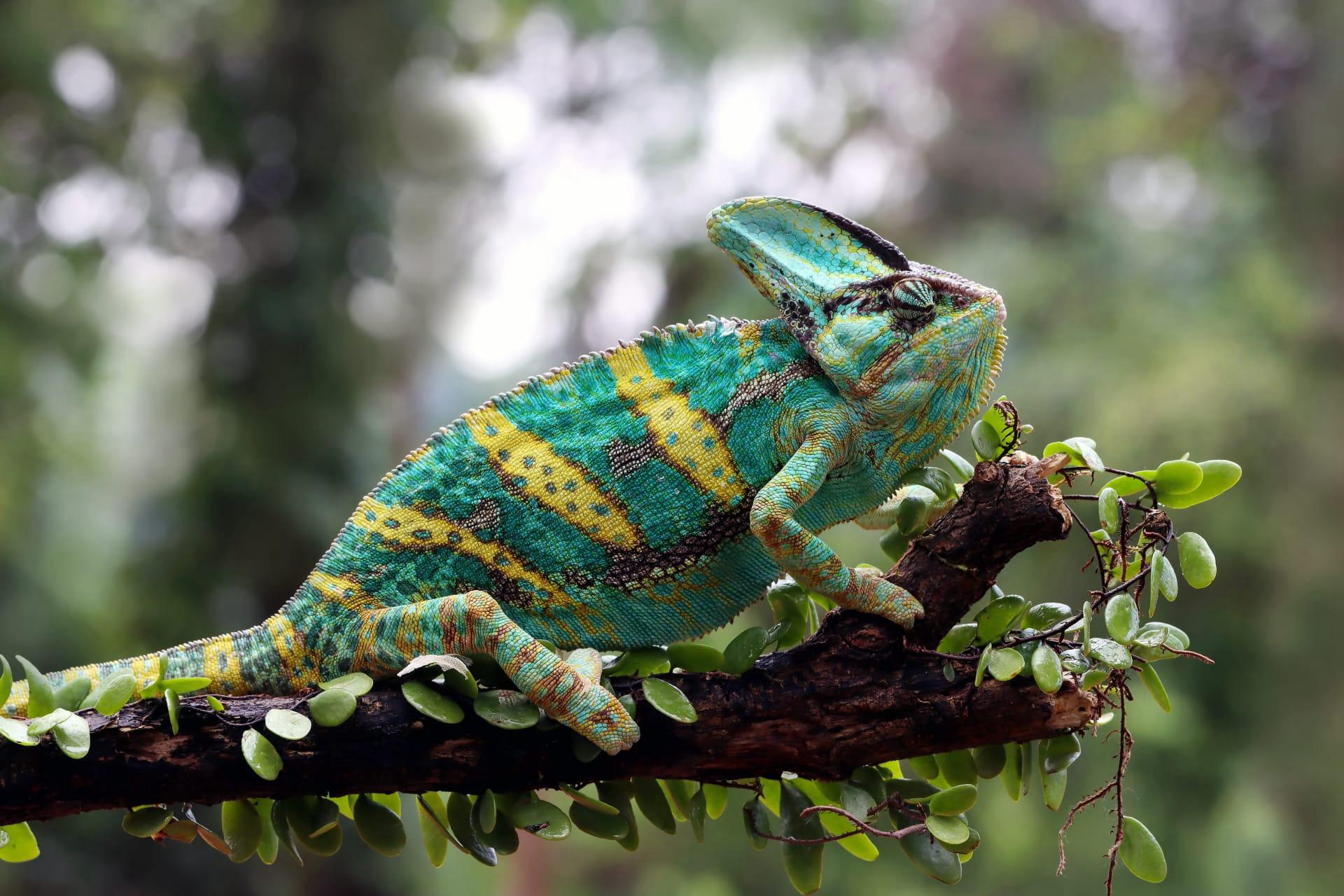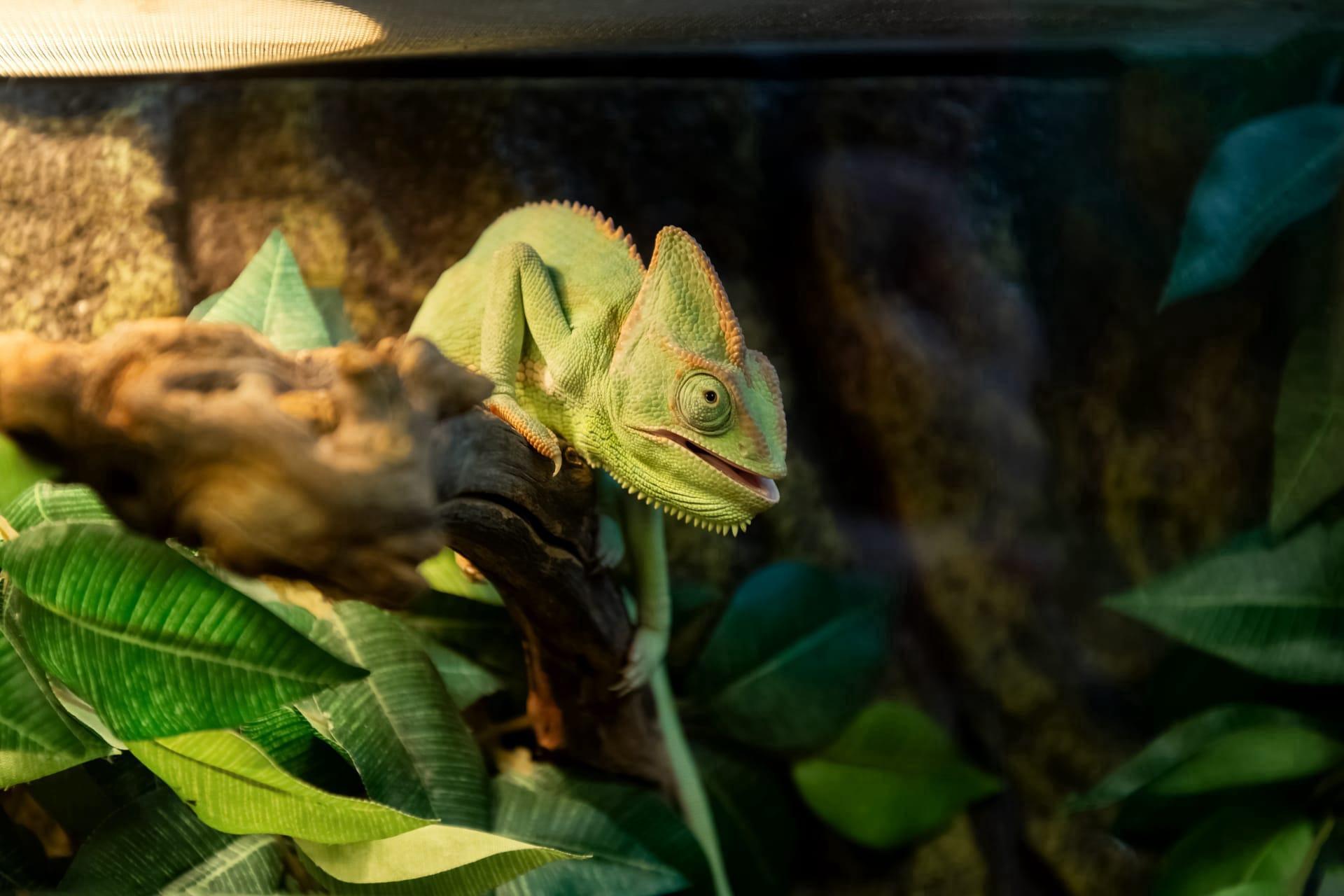1
Did you know that Panther Chameleons, a species found primarily in Madagascar, have a superpower-like ability to change their skin color? This isn't just for show; it's a complex process involving specialized cells under their skin. These cells, called chromatophores, contain different pigments. By adjusting these cells, a Panther Chameleon can rapidly shift its color from vivid blues to greens, reds, and even yellows, aiding in communication and temperature regulation.
Their tongue is another remarkable feature. A Panther Chameleon's tongue can be up to twice the length of its body (including its tail), and they can shoot it out at incredible speeds. In just 0.07 seconds, their tongue can accelerate from 0 to 60 miles per hour. This lightning-fast action is perfect for catching unsuspecting insects, their primary diet.

2
When it comes to vision, Panther Chameleons are quite extraordinary. They can rotate and focus their eyes independently, allowing them to look in two different directions at once. Imagine being able to watch two TV shows simultaneously without missing a beat! This ability provides them with a nearly 360-degree view of their surroundings, making them exceptional hunters and alert to any predators.
Size matters in the world of Panther Chameleons, especially for males. They are significantly larger than females, with some males reaching up to 20 inches in length, while females typically max out around 12 inches. This size difference isn't just for show; it plays a crucial role in their mating rituals. Bigger males often have brighter colors and are more attractive to females.

3
Lifespan in the wild can be tough and short for many animals, but Panther Chameleons have a surprisingly brief lifespan even in the best of conditions. On average, they live only about 2-3 years. This short lifespan is a stark contrast to many other reptile species that can live for decades. It underscores the importance of their early life stages for reproduction and population sustainability.
Reproduction in Panther Chameleons is quite a colorful affair. Males display vibrant colors to attract females and show dominance over other males. Once a pair is formed, the female lays 10 to 40 eggs, which she buries in a hole she digs herself. These eggs will then incubate for about 7 to 9 months before hatching, depending on temperature and humidity conditions.

4
Did you know that the color change in Panther Chameleons isn't just an emotional reaction but also a reflection of their physical and physiological state? For example, darker colors might indicate a cold chameleon, as darker shades absorb more heat. Similarly, bright colors could be a sign of courting behavior or a way to intimidate other chameleons or predators.
Another fascinating aspect is their habitat preference. Panther Chameleons prefer living in warmer climates and are typically found in various habitats across Madagascar, from rainforests to coastal areas. They need these warm environments to regulate their body temperature since, like all reptiles, they are cold-blooded. This means they rely on external heat sources to maintain their body temperature.

5
Panther Chameleons have a unique adaptation in their skeletal structure - their feet! Their feet are zygodactylous, meaning they have two toes pointing forward and two backward. This adaptation is perfect for their arboreal lifestyle, providing a strong grip on branches and leaves as they navigate through trees.
Lastly, let's talk about their diet. These creatures are insectivores, primarily feeding on insects like crickets, roaches, and worms. However, they are known to occasionally indulge in smaller birds or other lizards. Their hunting technique is stealth and precision, relying on their unique vision and lightning-fast tongue to snatch prey from a distance.